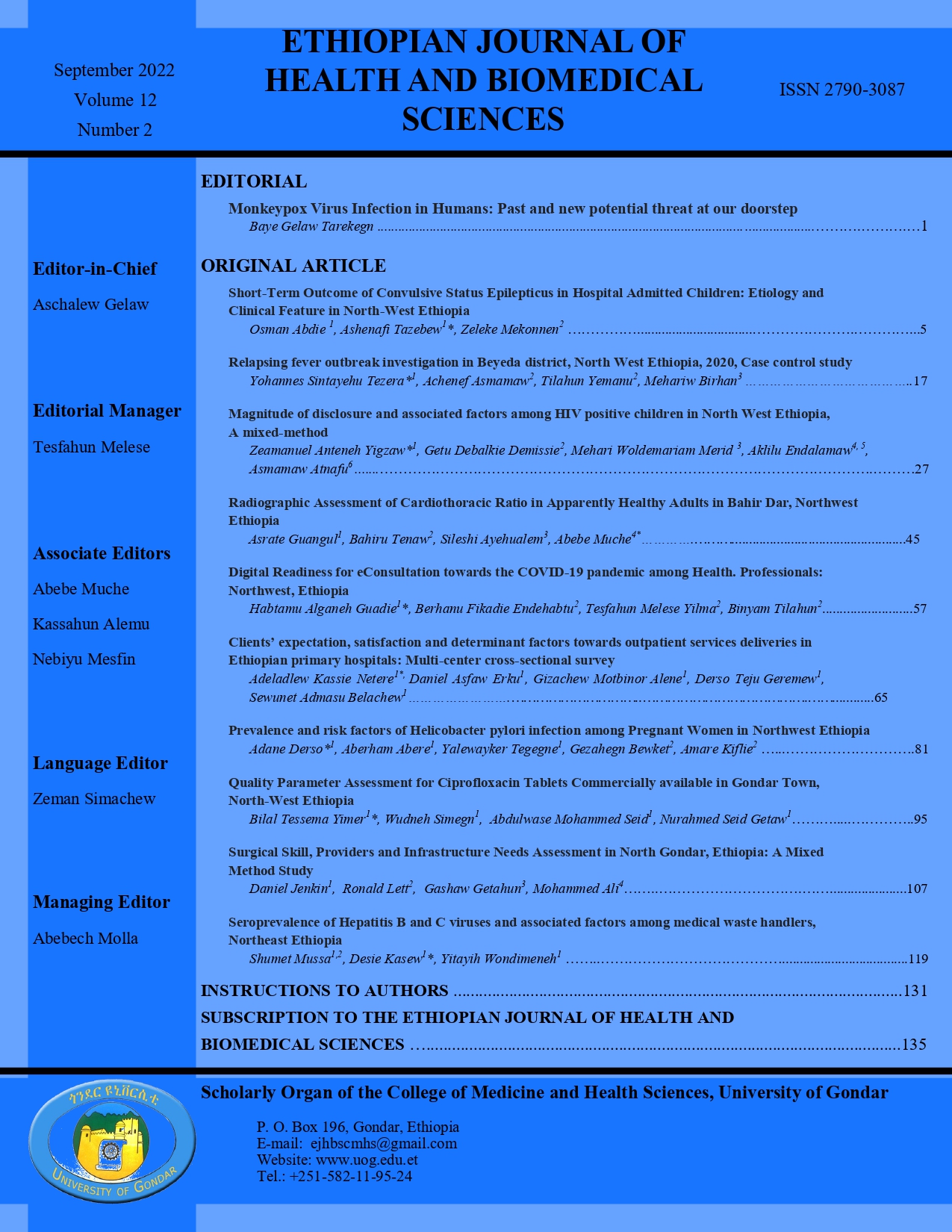Quality Parameter Assessment for Ciprofloxacin Tablets Commercially available in Gondar Town, North-West Ethiopia
DOI:
https://doi.org/10.20372/ejhbs.v12i2.373Abstract
Background: Pharmaceuticals play a vital role in protecting human health and encouraging wellness. The safety, efficacy, and consistency of the drugs should, however, be maintained to provide a desired pharmacological effect. The accessibility and utilization of substandard and counterfeit ciprofloxacin products in the market may lead to risk of treatment failure and microbial resistance. This study was conducted to assess the quality and physicochemical equivalence of nine brands of ciprofloxacin hydrochloride tablets sold in Gondar town, Ethiopia.
Methods: Nine brands of ciprofloxacin tablets were subjected to in vitro tests related to the quality of the tablet dosage form, and the tests were carried out according to the procedures in standard books (USP and British Pharmacopeia).
Results: This study showed that all ciprofloxacin brands met the requirements stated in standard books for weight uniformity, friability, crushing strength, and assay of active ingredient. The disintegration times varied between 3-7 min for all nine ciprofloxacin products. All nine of the products passed dissolution testing in compliance with USP requirements. Code 6 tablets displayed the highest percentage release (107.12 %), while Code 3 had the least percentage release (96.16 %) at 45 min. Accordingly, all products passed the drug content test as defined in USP, where the drug content should range from 90% to 110%. Code 5 showed the highest percentage content (102.76 %), while Code 2 possessed the least active drug (91.73 %). Mathematical model-dependent methods have shown that data relating to drug release match well with the Weibull release model.
Conclusion: This study showed that all brands of ciprofloxacin met the quality requirement according to standard books in terms of weight uniformity, crushing strength, friability, disintegration, dissolution, and assay.


